Data Centers
The relentless demand for capacity means that data centers are constantly being asked to do more, and to do it faster than ever. Those who design, build and maintain data storage facilities are in the crosshairs – and they recognize that optimization is essential for meeting the day-to-day needs of enterprises and industries, while keeping pace with rapid developments in streaming video, Internet of Things, smart cities, 5G wireless and more. At the same time, they also must deal with challenges presented by interoperability, migrating legacy systems and applications, repurposing central offices into data centers, and introducing virtualized architectures. Check out the resources below to help you better understand your choices for designing and installing data centers that meet your needs today and tomorrow.
Data Center FAQs
Which MPO connector should I use?
The three most common MPO connector options are MPO-8, MPO-12 and MPO-24.
- MPO-8 is a legacy standard for the QSFPs, coming out of the transceivers running 40 Gigabit or 100 Gigabits. It is used for both multimode and singlemode transceivers and breakouts, but offers the lowest density option, because you’ll have to have more components for the MPO-8 as you move forward into higher speeds.
- The MPO-12 is the legacy embedded base and with the use of different modules and array fanouts can accommodate multiple configurations.
- MPO-24 is the newest option and is used on the trunk cables and modules. MPO-24 helps to future proof your network because it provides the highest panel density, allows you to use fewer components and may offer the lowest first installed cost. MPO 24 trunk implementations provide significant advantages for duplex and parallel implementations, providing for faster installation and better pathway efficiency.
What is a leaf-spine architecture and why is it popular?
In a leaf-spine architecture, a series of leaf switches form the access layer.These switches are fully meshed to a series of spine switches. Leaf-spine architectures are popular because they reduce the number of “hops” from server to server, which minimizes latency. One of the consequences of this approach is that it requires more physical connections to support that any-to-any connectivity. The physical layer becomes more important, because it needs to accommodate a simplex, duplex or parallel networking scheme. This means that sometimes the design, implementation, testing and validation can get fairly complex.
How do you inspect and clean an unpinned MPO connector?
An unpinned MPO is inspected in the same way as a pinned MPO, however from an inspection perspective there’s no contact made with the fiber. You’d use the same inspection probes that will find the fibers, inspect them, and do a pass fail analysis. For cleaning, you can use the cassette style cleaners. In fact in some ways they are easier to clean than a pinned connector
What changes were made to ANSI/TIA-942 when it was updated in 2017?
Some important changes to TIA-942-B Data Center Standard include:
- Added MPO-16, MPO-32 (ANSI/TIA-604-18) and MPO-24 (ANSI/TIA-604-5)
- Added Category 8
- Changed recommendation to category 6A or higher
- Added wideband laser-optimized 50/125 µm multimode (OM5)
- Added 75-ohm broadband coaxial cables and connectors (ANSI/TIA-568.C-4)
- Added recommendations for fiber in non-continuous pathways that could cause micro bends
- Recommends that cabinets be at 1200 mm (48”) deep and to consider cabinets wider than 600 mm (24”) wide
- Recommends considering pre-terminated cabling to reduce installation time and improve consistency and quality of terminations
- Recommends considering need for proper labeling, cable routing, cable management, and ability to insert and remove cords without disrupting existing or adjacent connections
- Maximum cable lengths for direct attach cabling in EDAs reduced from 10 m (33 ft.) to 7 m (23 ft.). (Direct attach cabling between rows is not recommended).
Other relevant changes include:
- Change in return loss for single-mode fiber from minimum 26dB to minimum of 35dB, making field terminations more difficult
- Polarity in Testing; used to be covered in ANSI/TIA -568.0-D and now is addressed in 568.3-D.
What types of connectors are used in Data Center applications?
In fiber optic systems for data centers, LC, SC and MPO optical fiber connectors are often used.
- SC (square connector) connectors have a push-pull coupling end face with a spring-loaded ceramic ferrule, and is ideal in data center applications.
- LC (Lucent connector) connectors – also push-pull connectors – came along after SC connectors, and feature a smaller ferrule (for this reason, it’s known as a “small form-factor connector”). Its smaller size makes it ideal for dense data center racks and panels.
- MPO connectors are used for ribbon cables with anywhere from eight to 24 fibers.
What type of fiber do you recommend for data center applications?
To support the high bandwidths required in data centers, most companies are installing at least OM4, laser optimized multimode fiber. Some companies are installing single-mode fiber, but that requires more expensive optics. A new option that is emerging is OM5, a wide bandwidth multimode fiber which allows short wavelength division multiplexing. This means the fiber can carry multiple wavelengths of light over the same fiber, increasing bandwidth significantly and yet still allowing the use of lower cost multimode optics.
What is wide band multimode fiber and how is it used?
WBMMF is a relatively new fiber medium specified in ANSI/TIA-492AAAE and given the designation of OM5 multimode fiber by ISO/IEC and TIA. This 50/125 µm multimode laser optimized fiber was originally developed to support Short Wavelength Division Multiplexing (SWDM) and supports 4 wavelengths of 25Gb/s transmission for an aggregated 100 Gb/s transmission on a duplex LC link, a popular and familiar interface in the data center. WBMMF supports four wavelengths between 850 nm and 953 nm, using multimode optics. WBMMF was designed for use in data centers.
RECENT WEBINARS
-

Certifying high density data center fiber cabling to TIA-568.3E standards
Are you involved in installing data center fiber cabling? The FOTC and EXFO invite you to join us in exploring…Read more -

Prepping for a High Speed Upgrade
When planning to upgrade transmission speeds, data center network administrators must plan for far more than new hardware. In several…Read more -

Fiber Troubleshooting: Efficient methods for fault identification and repair
Today more than ever we depend on access to the internet in our day-to-day lives. Whether we are running a…Read more -
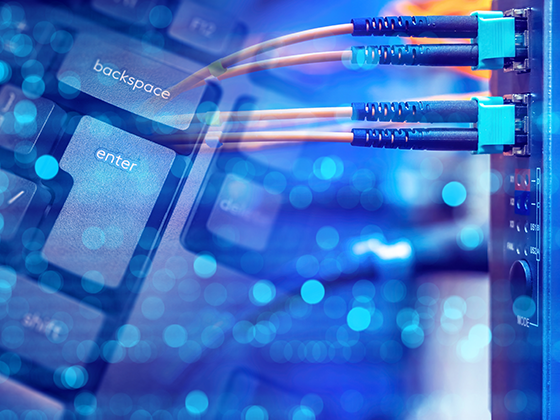
Choosing the Right Fiber Optic Solutions for Enterprise LAN Networks
Fiber optic cable, hardware and connectivity are now mainstay solutions for enterprise LAN networks, from the campus network, up the…Read more
RECENT ARTICLES
-

Artificial Intelligence Needs Glass
With large language models that power systems like ChatGPT increasing in popularity – the AI text-generating website saw 1.6 billion…Read more -

Connecting the future—from cloud to edge
All around us, technology is rapidly evolving, and its capabilities are continuing to become a part of everyday life. Advanced…Read more -
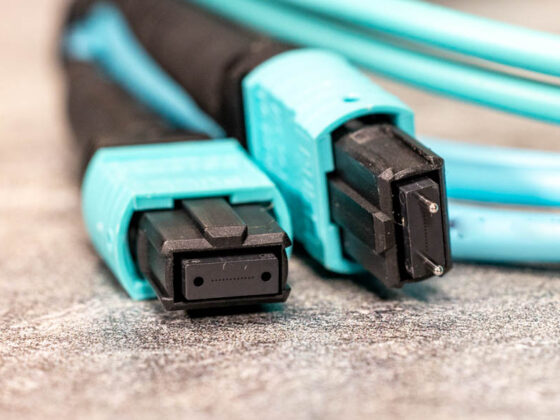
5 things you need to know about multifiber push-on connector testing
With increased service demand is driven by an uptick in teleworking, distance learning, and online socializing trends, reliable network connectivity…Read more -
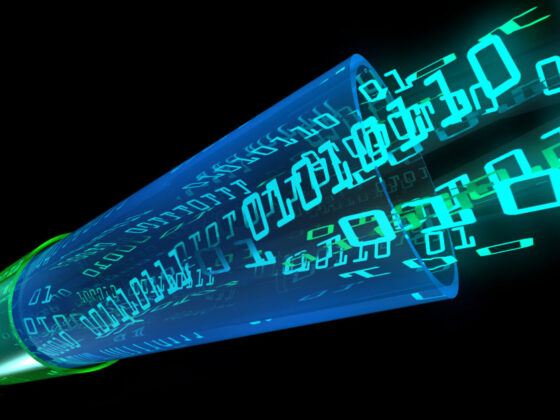
TIA Standard adds MPO Test Requirements and Procedures
In its latest revision (September 2022), the Telecom Industry Association (TIA) added MPO test requirements and procedures to their optical…Read more
RECENT WHITE PAPERS
-

Types and Locations of Edge Data Centers: Scoping Locations That Work for Your Needs
To meet the needs of new applications, data needs to be hosted very close to users and network functionality needs…Read more -
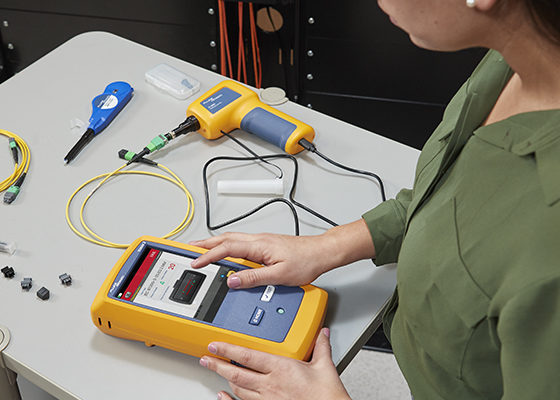
Fiber Contamination, Inspection & Cleaning
Despite industry best practice of inspecting and cleaning fiber optic endfaces, contaminated connections remain the number one cause of fiber…Read more -
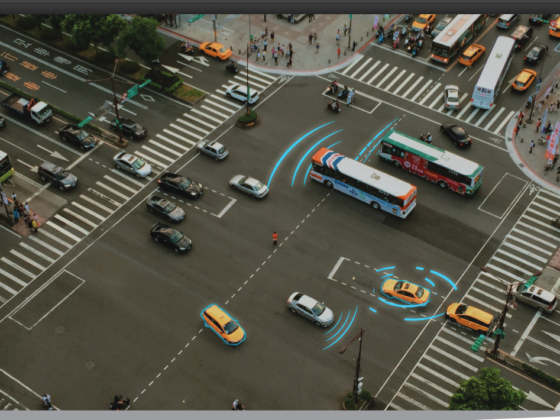
Why Edge? Why Now? How the Rise of Edge Computing will Reshape the Data Center Landscape
Over the next decade, edge computing will reshape the data center landscape due to the rapid growth in the number…Read more -
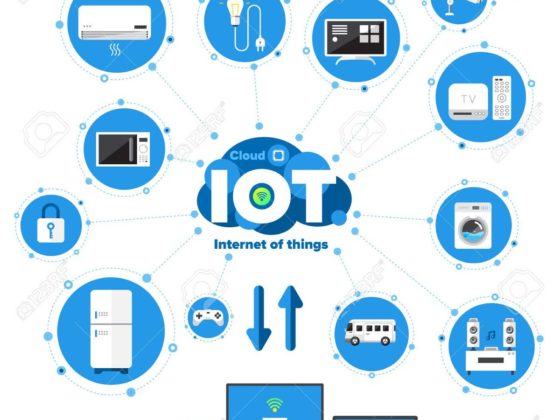
The Promise of Narrowband IoT
Current IoT communication solutions on cellular systems require too much power and cost for many of IoT’s applications. Narrowband IoT…Read more
DATA CENTER
STANDARDS
TECHNOLOGY FOR
DATA CENTERS
Types of fiber used
MPO connectors
Architectures
